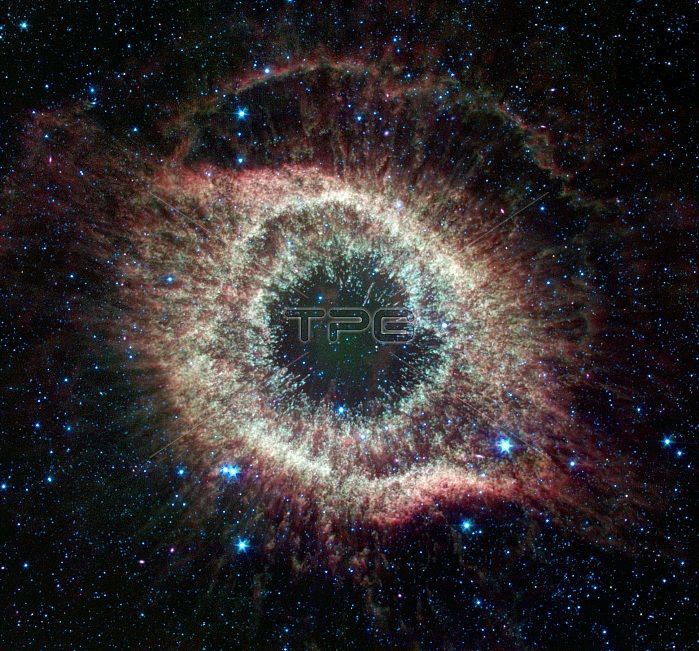
A newly expanded image of the Helix nebula marks the fourth anniversary of the launch of NASA's Spitzer Space Telescope. This spectacular object, a dying star unraveling into space, is a favorite of amateur and professional astronomers alike. Spitzer has mapped the expansive outer structure of the six-light-year-wide nebula, and probed the inner region around the central dead star to reveal what appears to be a planetary system that survived the star's chaotic death throes. Spitzer launched from Cape Canaveral, Fla., on August 25, 2003. It has provided unprecedented infrared views of objects as diverse as asteroids in our own solar system to galaxies at the edge of the observable universe. Recent discoveries include the first detection of water vapor on a planet orbiting another star and a titanic galactic collision five billion light-years away. Spitzer is the first infrared space telescope to use an Earth-trailing orbit and passive cooling techniques, such as a sun shield, to obtain the low temperatures required for an infrared observatory. The design allowed for a much smaller tank of liquid-helium coolant, or cryogen, to chill the telescope, thereby slashing mission costs. The minimum expected lifetime of Spitzer was only two-and-one-half years. Now, Spitzer's cryogen is expected to last much longer, giving the mission a lifetime of more than five-and-one-half years.
| px | px | dpi | = | cm | x | cm | = | MB |
Details
Creative#:
TOP22309956
Source:
達志影像
Authorization Type:
RM
Release Information:
須由TPG 完整授權
Model Release:
N/A
Property Release:
No
Right to Privacy:
No
Same folder images:

 Loading
Loading